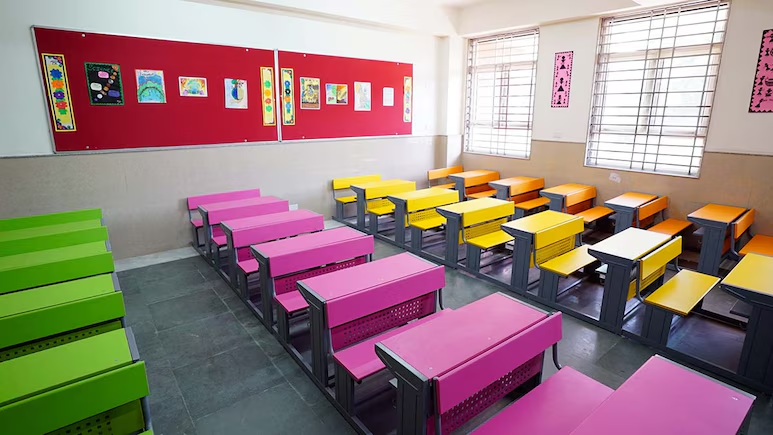
The Union Cabinet on Tuesday nodded for a new National Education Policy with major reforms in higher education and structural reform in the school system from 10+2 model to 5+3+3+4 model with a target of 50 per cent Gross Enrolment Ratio (GER) by 2035.
A new curriculum structure, revised board exam pattern, coding lessons, and a new centre on assessment are among the few changes introduced in the National Education Policy 2020 for schools.
Addressing a press conference on Tuesday, Union Minister Prakash Javadekar said a 21st century National Education Policy (NEP) was the need of the hour as no changes have been introduced in the last 34 years. Under the umbrella of a new education policy, the government insisted more focus on basic literacy and numeracy.
Javadekar, while introducing the changes, announced major changes in the pedagogical structure of the curriculum. As per the latest directive, students will be having increased flexibility and choice of subjects as they will be able to take up any courses they want. The schools will not have any rigid formation of streams of arts, commerce, science. Additionally, there will be no separation between curricular or extra-curricular activities and vocational or academic streams.
Highlights of the structural change in the school curriculum
·Introducing variations to the education model, the school education system will now be organised in the 5+3+3+4 format, scrapping the existing 10+2.
·The new system will cover four stages -- Foundational Stage (three years of pre-school followed by classes 1-2), Preparatory Stage (classes 3-5), Middle Stage (classes 6-8) and Secondary Stage (classes 9-12).
·Children younger than five years of age will be eligible for enrolment in a “preparatory class”. A teacher qualified in early childhood education will be designated to teach young children.
·In all the schools, the new policy has laid emphasis on the use of regional language, local language and mother tongue as the medium of instruction upto Class 5.
·States will prepare their own curricula and prepare textbooks incorporating state flavour and material.
·Reduction of the weight of school bags and textbooks will be ensured by bringing in changes in curriculum load.
·Sanskrit will be offered at all levels of school and higher education as an option for students, including as an option in the three-language formula.
·Foreign languages, such as Korean, Japanese, Thai, French, German, Spanish, Portuguese, and Russian, will also be offered at the secondary level.
·Equal emphasis will be given on all the subjects, such as- science, social sciences, mathematics, art, languages, sports- with the integration of vocational and academic streams in schools.
·Board exams will be redesigned and made easier by testing core capacities and competencies.
·Students will be allowed to take board exams on up to two occasions during any given school year- one main examination and one for improvement, if desired.
·All students will take school examinations in classes 3, 5, and 8 which will be conducted by the respective authorities.
